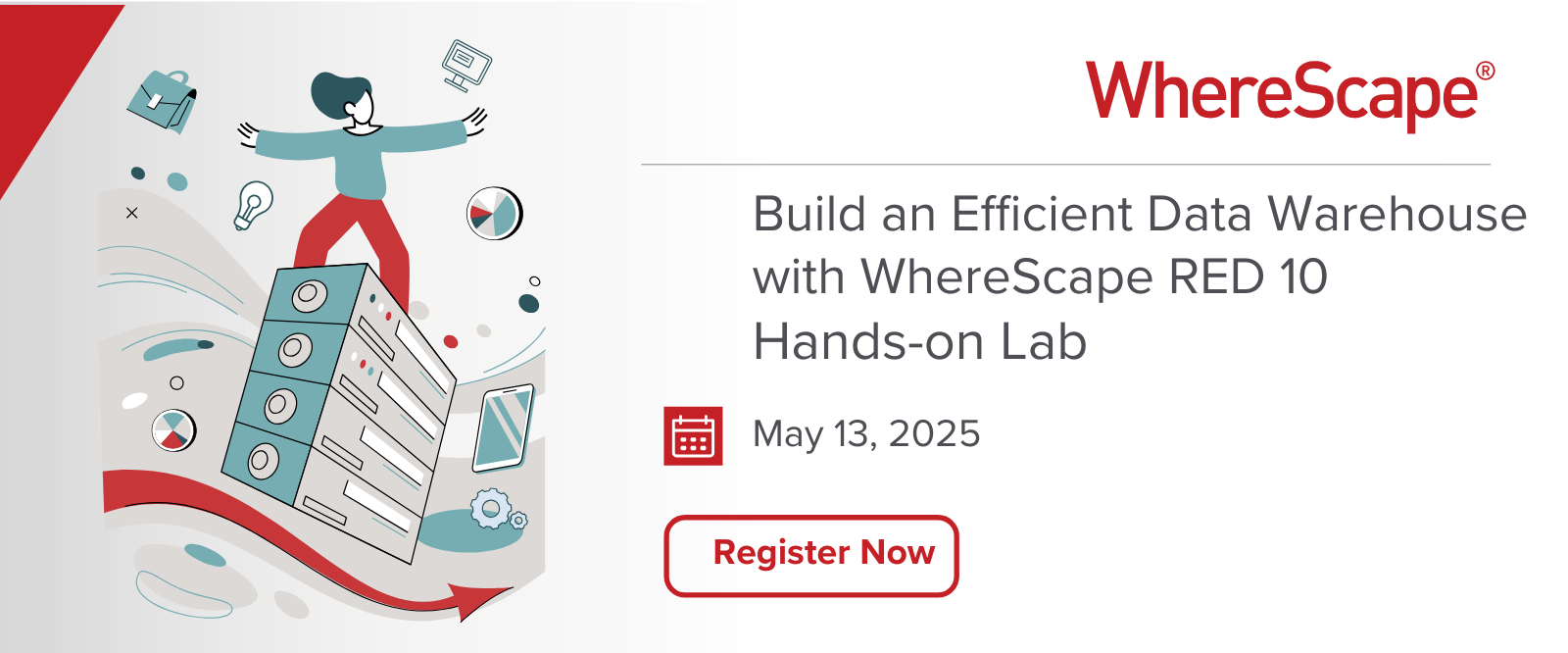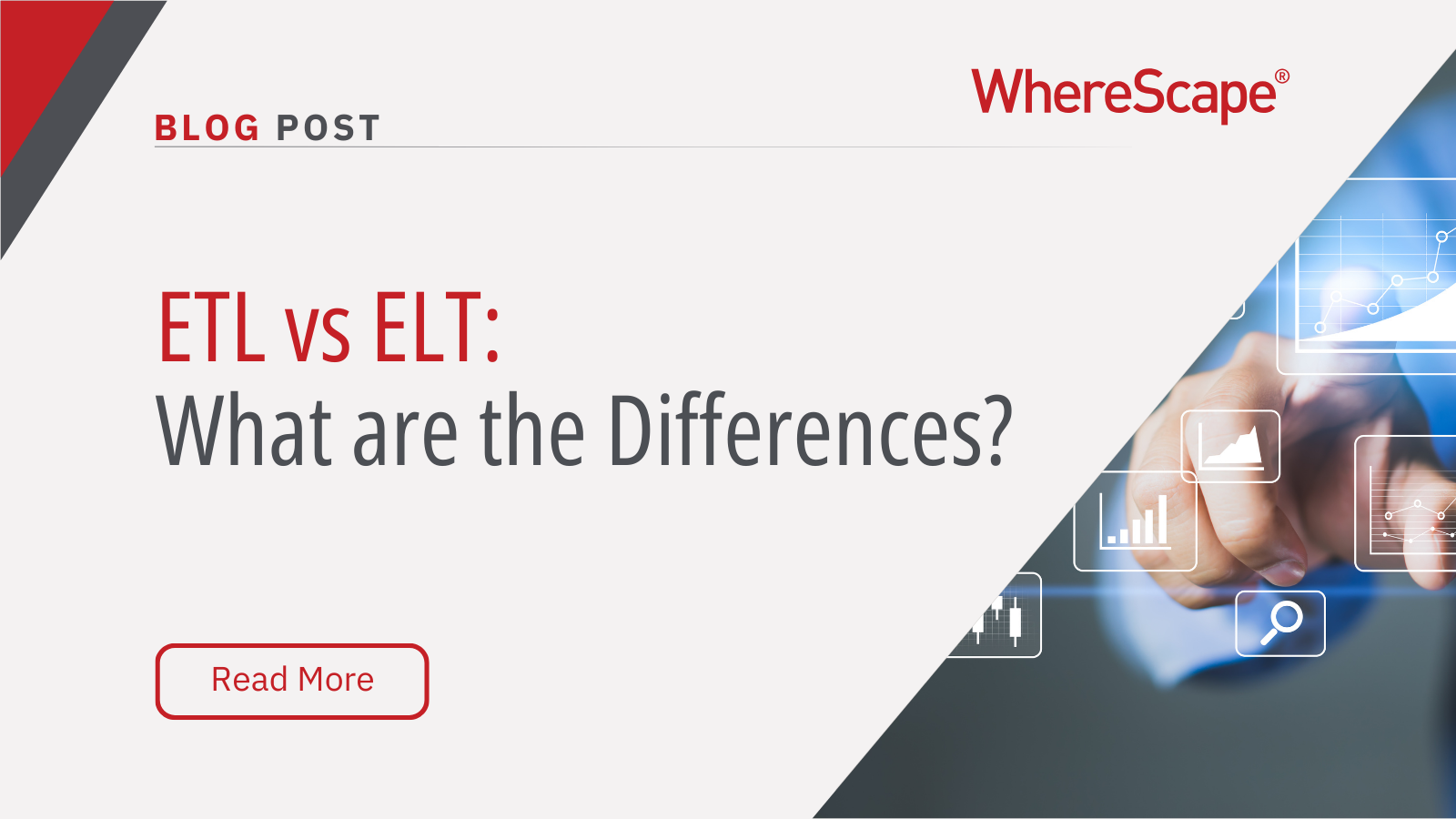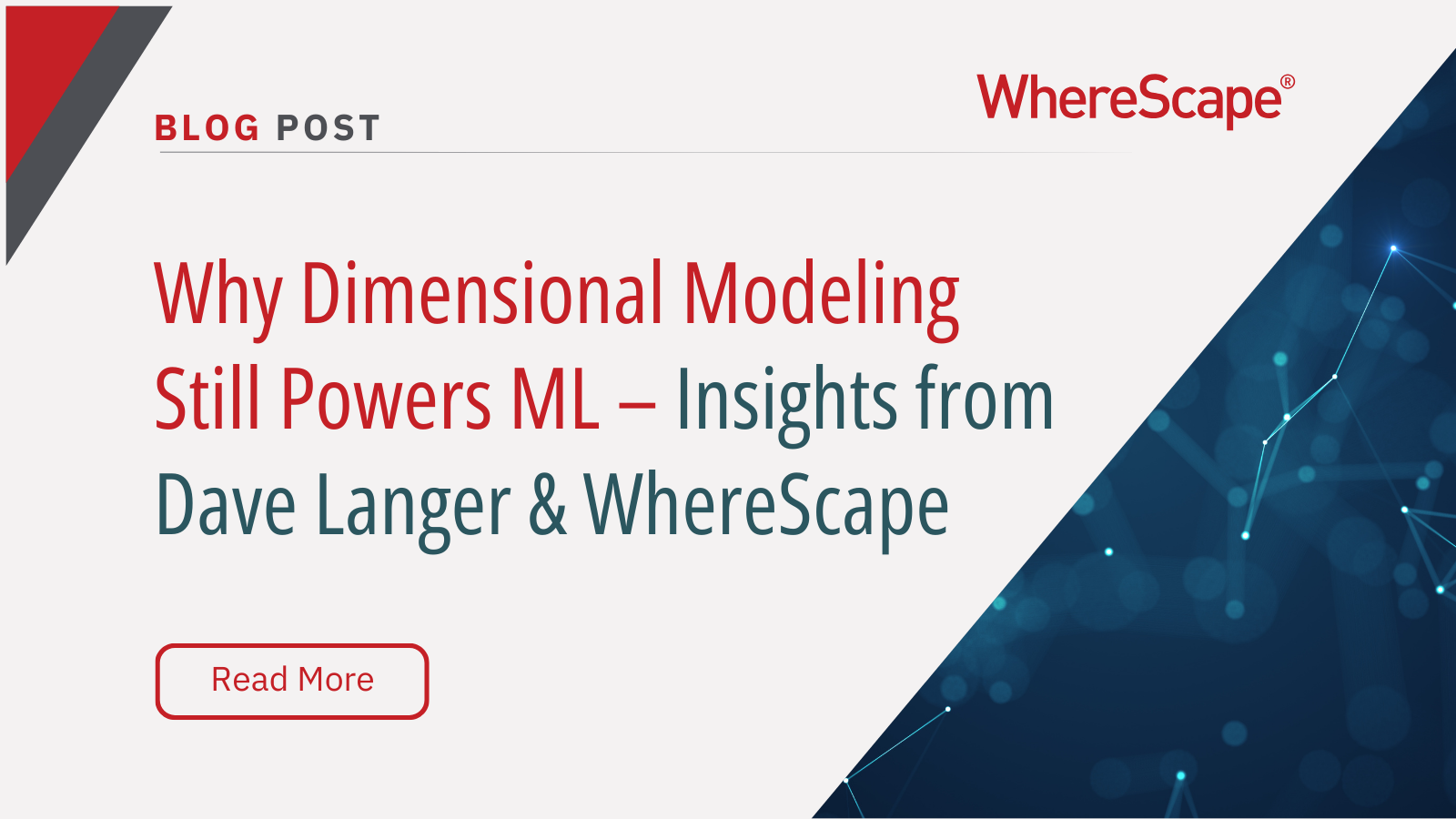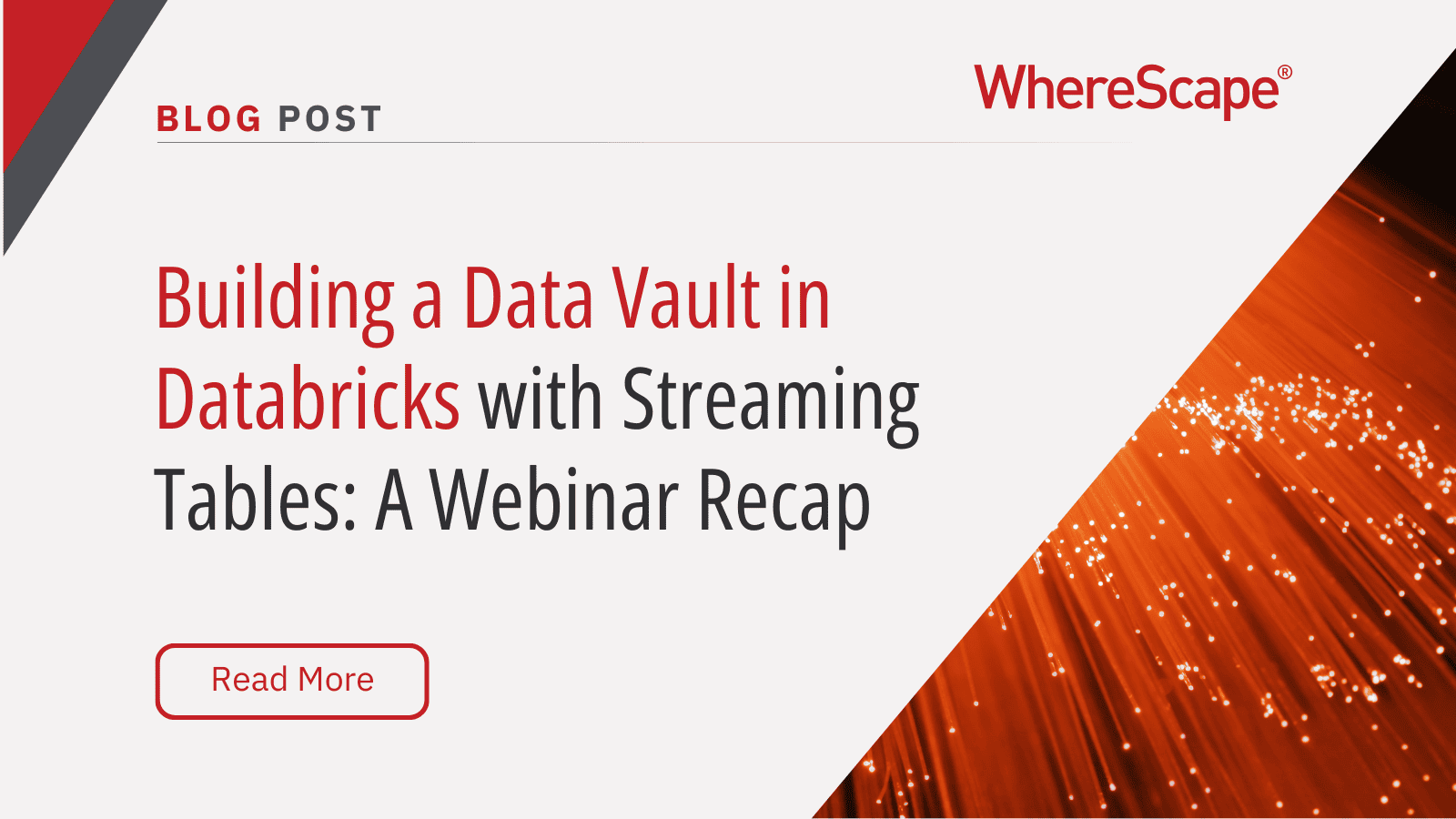Tune in for a free, live virtual hands-on lab...
Revolutionizing Higher Education with Data Automation: Insights and Webinar Recap
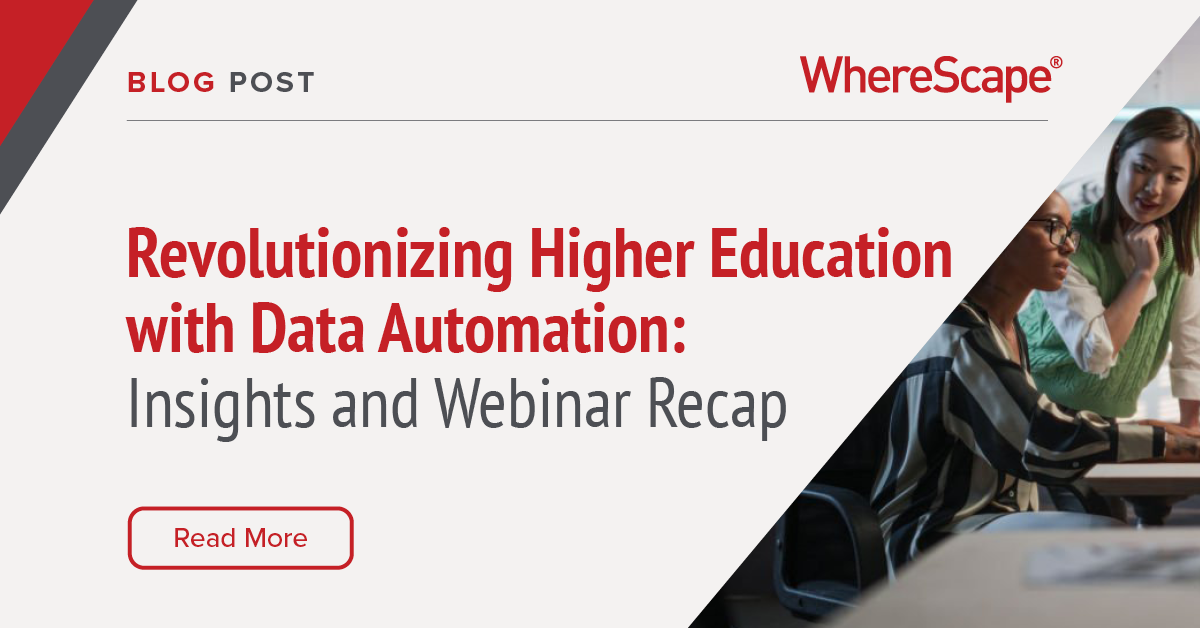
In today’s fast-paced educational landscape, data automation is making waves. Our webinar,”Revolutionizing Higher Education: Data Automation for Enhanced Efficiency and Innovation” hosted in partnership with EDUCAUSE, recently brought together some brilliant minds to discuss this very topic. During the discussion, they explored how data automation in higher education could speed up efficiency, spark innovation, and more.
Our panel included Kishore Thummaluru from Rochester Institute of Technology, Kevin Marshbank from The Data Vault Shop, and Patrick O’Halloran from WhereScape, eager and ready to share their wealth of knowledge in data automation.

Data Warehouse Automation
“Automation in data warehousing is not binary but exists on a spectrum.” – Patrick O’Halloran, WhereScape
The world of data warehouse automation is more nuanced than many might assume, as Patrick O’Halloran from WhereScape highlighted in the webinar. Patrick’s introduction to this topic was not just an overview but an eye-opener stating that data automation does 5 things for you:
- Boosts productivity
- Cost-efficient
- Reduces risks and complexity
- Accelerates prototyping and response to urgent needs
- Enhances the quality of deliverables by minimizing human error
At its core, data warehouse automation is about enhancing the efficiency and effectiveness of data storage and management processes. Patrick stressed that this doesn’t imply a simplistic binary state – where an organization either fully adopts automation or doesn’t use it at all. Instead, it’s a spectrum, an ongoing journey of integration, enhancement, and refinement.
Patrick referenced Mercedes’ driving automation levels 0-5 to illustrate the spectrum of data automation, with zero indicating no automation and five representing full automation.
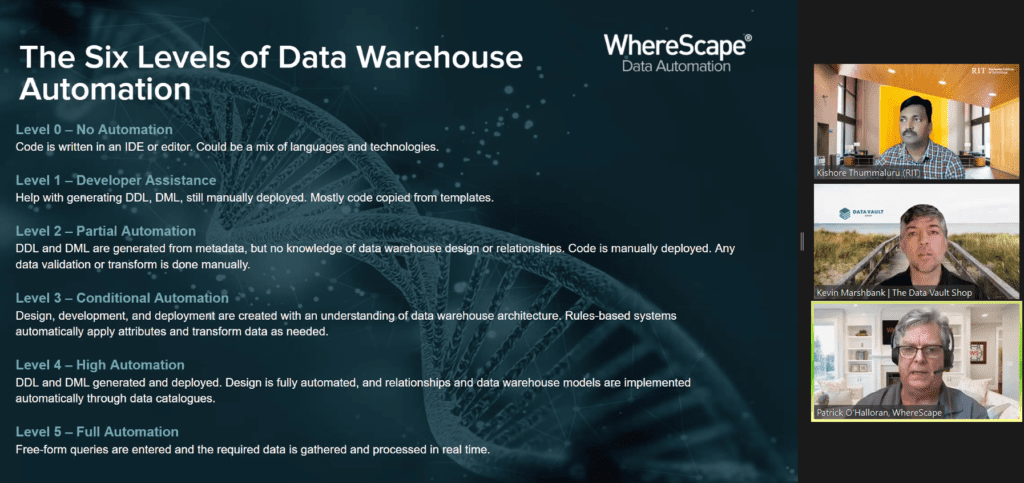
The data industry predominantly operates at Level 3 on this spectrum, characterized by a harmonious blend of design, development, and deployment within data warehousing processes, created with an understanding of data warehousing architecture. But what does this mean?
It means that data automation is a continuous spectrum and we are using tools that have an understanding of data warehouse architecture and design by using rules-based systems to apply attributes and transform data as needed.
Efficiency and Quality Through Automation
“The advantage here with WhereScape’s automation is, that it does everything for you right? From the profiling to a generation of the documentation. It does everything.” – Kishore Thummaluru (RIT)
Kishore Thummaluru from RIT highlighted a key transformation in data warehousing: the remarkable efficiency and high-quality assurance that automation tools such as WhereScape bring forth. This revolution in automation tools isn’t just about doing things faster; it’s about working smarter, not harder.
Time efficiency is one of the most striking impacts of data automation. The significant reduction in time required for data warehousing projects and tasks that traditionally took months can now be accomplished in mere hours. This accelerated pace is not just a matter of convenience but a strategic advantage in today’s fast-paced environment.
Another critical aspect is the maintenance of high-quality standards in coding is quality assurance. Data automation tools ensure consistency and accuracy, minimizing human errors that can occur in manual coding processes. This consistency is key to maintaining the integrity of data and the reliability of data-driven decisions.
Data Automation in Higher Education
Kishore Thummaluru from Rochester Institute of Technology (RIT) shared his compelling insights on how data automation in higher education has become essential. His experiences at RIT highlighted two key aspects where automation made a significant impact:
- Integration of Diverse Data Sources: In the complex environment of higher education, data comes from various sources such as finance, HR, and student information. Kishore illustrated how automation was crucial in integrating these different data streams at RIT, thereby creating a cohesive and comprehensive data repository. This integration has streamlined and automated processes and improved data accessibility and usability.
- Adaptability to New Requirements: The dynamic nature of educational institutions means that their data requirements are always evolving. Kishore emphasized that RIT rapidly adapted to changes through automation, ensuring their data platform’s relevance and efficiency. This approach kept documentation constantly updated and reports accurate across the board, achieving results within months instead of years. Adaptability is crucial for keeping pace with the ever-changing landscape of higher education.
“Automation in higher education is not just a tool, it’s a strategy to unify diverse data for informed decision-making.” – Kishore Thummaluru, RIT
Thummaluru’s use case from RIT highlights the importance of data automation in managing and utilizing data effectively in the higher education industry. By embracing technological advancements, such as WhereScape, institutions like RIT can enhance their data management strategies, leading to more informed and efficient decisions.
The Benefits of Automation
Patrick, Kevin, and Kishore collectively recognized the significant benefits of data automation, each highlighting its impact across various organizational aspects. One major advantage noted by Patrick was cost reduction. He emphasized that automation streamlines manual processes, reducing the time and resources traditionally required for data management tasks, thereby leading to substantial cost savings for organizations.
Kevin brought attention to another critical benefit: risk mitigation. He pointed out that automation minimizes human error and enhances data security, significantly reducing the likelihood of data breaches. This improvement in reliability and security is crucial in today’s data-centric world, where data integrity is paramount.
He also touched on WhereScapes documentation feature. In a few clicks, you can have the most recent, extensive documentation, automatically done for you. So no more hours, weeks, or months spent on outdated documentation, wasted time, and valuable resources.
Kishore highlighted the improved agility that automation offers. He noted that it enables organizations to quickly adapt to new data requirements and changes in the data landscape. Adding one dimension to a data set would usually take a month, but with WhereScape, you can have this done in less than an hour. This responsiveness is essential for maintaining competitiveness in a rapidly evolving digital environment.
Navigating the Challenges of Data Warehouse Automation
Data warehouse automation doesn’t come without it’s challenges. Kevin Marshbank from The Data Vault Shop pointed out that these challenges are not technical but political and emotional, particularly stemming from consulting firms that may see automation as a threat to traditional revenue models based on billable hours.
People can’t seem to want to adopt it, which is a challenge to show the value and get everyone on the same page. Another challenge is that coders are concerned that if you adopt data around automation, you’re going to be fixed to a rigid path and that it will generate inefficient code.
“The automation does what allows the organizations to focus on the real problems.” – Kevin Marshbank, The Data Vault Shop
Data Lineage and Data Governance in Education with Automation
The panelists repeatedly emphasized the often-overlooked power of data lineage and documentation in data warehouse automation. This feature is crucial for effective data governance, particularly in education, where data accuracy and compliance are crucial.
During the webinar, they discussed some key aspects of Data Lineage and Documentation.
- Transparency in Data Journey: Automation tools provide a clear view of data’s path, from its origin through various transformations. This transparency is essential in understanding and correctly using data, especially in educational settings where data collected comes from diverse sources.
- Simplifying Documentation: Automation simplifies the creation of real-time, accurate, up-to-date documentation, a task that is traditionally time-consuming. This automated documentation supports compliance with regulatory standards and internal governance.
This segment of the webinar underscored the significance of data warehouse automation in bolstering data management within the educational sector. The adoption of these sophisticated tools allows educational institutions not only to refine and expedite their processes but also to bolster the quality and strategic application of their data resources.
Kevin gave a real-world example, highlighting the importance of documentation. He mentioned in a very large financial organization where the auditors, would come through for their particular division which is using WhereScape, and the auditors come in and they would produce documentation, then never see them again. At the same time, other teams spent weeks, if not months, with auditors, going through things to determine if they were following all the required procedures.
“Automation is one of the biggest buying points for me. The way it shows the lineage is really awesome and trustworthy.” – Kishore Thummaluru, RIT
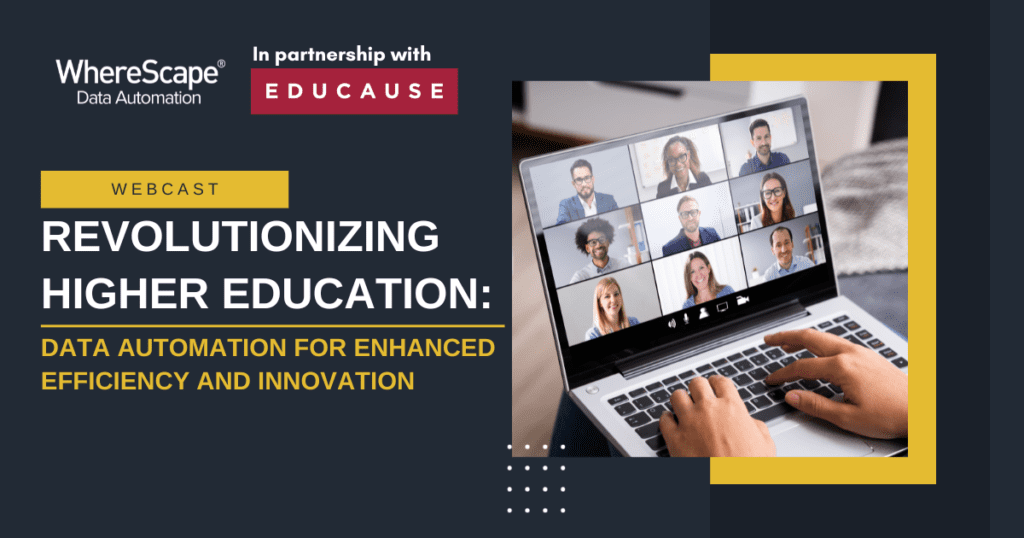
Data Automation in Higher Education with WhereScape
Our panel discussion covered the broad spectrum of data warehouse automation, emphasizing not just efficiency but also the vital importance of risk mitigation and maintaining high-quality coding standards. Navigating through some resistance shows how significant automation is in the educational industry. Watch the webcast here.
If you’re as excited about what data automation can bring to your organization, particularly in the educational sector, book a demo with us at WhereScape and experience for yourself the efficiency, quality, and strategic benefits that our data automation solutions can offer. Book a Demo with WhereScape now.

Join us in this journey towards a future where we not only manage data but also empower it to drive decisions with unmatched precision, efficiency, and agility. Let’s transform the way you handle data together.
ETL vs ELT: What are the Differences?
In working with hundreds of data teams through WhereScape’s automation platform, we’ve seen this debate evolve as businesses modernize their infrastructure. Each method, ETL vs ELT, offers a unique pathway for transferring raw data into a warehouse, where it can be...
Dimensional Modeling for Machine Learning
Kimball’s dimensional modeling continues to play a critical role in machine learning and data science outcomes, as outlined in the Kimball Group’s 10 Essential Rules of Dimensional Modeling, a framework still widely applied in modern data workflows. In a recent...
Automating Data Vault in Databricks | WhereScape Recap
Automating Data Vault in Databricks can reduce time-to-value by up to 70%—and that’s why we hosted a recent WhereScape webinar to show exactly how. At WhereScape, modern data teams shouldn't have to choose between agility and governance. That's why we hosted a live...
WhereScape Recap: Highlights From Big Data & AI World London 2025
Big Data & AI World London 2025 brought together thousands of data and AI professionals at ExCeL London—and WhereScape was right in the middle of the action. With automation taking center stage across the industry, it was no surprise that our booth and sessions...
Why WhereScape is the Leading Solution for Healthcare Data Automation
Optimizing Healthcare Data Management with Automation Healthcare organizations manage vast amounts of medical data across EHR systems, billing platforms, clinical research, and operational analytics. However, healthcare data integration remains a challenge due to...
WhereScape Q&A: Your Top Questions Answered on Data Vault and Databricks
During our latest WhereScape webinar, attendees had fantastic questions about Data Vault 2.0, Databricks, and metadata automation. We’ve compiled the best questions and answers to help you understand how WhereScape streamlines data modeling, automation, and...
What is Data Fabric? A Smarter Way for Data Management
As of 2023, the global data fabric market was valued at $2.29 billion and is projected to grow to $12.91 billion by 2032, reflecting the critical role and rapid adoption of data fabric solutions in modern data management. The integration of data fabric solutions...
Want Better AI Data Management? Data Automation is the Answer
Understanding the AI Landscape Imagine losing 6% of your annual revenue—simply due to poor data quality. A recent survey found that underperforming AI models, built using low-quality or inaccurate data, cost companies an average of $406 million annually. Artificial...
RED 10: The ‘Git Friendly’ Revolution for CI/CD in Data Warehousing
For years, WhereScape RED has been the engine that powers rapidly built and high performance data warehouses. And while RED 10 has quietly empowered organizations since its launch in 2023, our latest 10.4 release is a game changer. We have dubbed this landmark update...
The Assembly Line for Your Data: How Automation Transforms Data Projects
Imagine an old-fashioned assembly line. Workers pass components down the line, each adding their own piece. It’s repetitive, prone to errors, and can grind to a halt if one person falls behind. Now, picture the modern version—robots assembling products with speed,...
Related Content
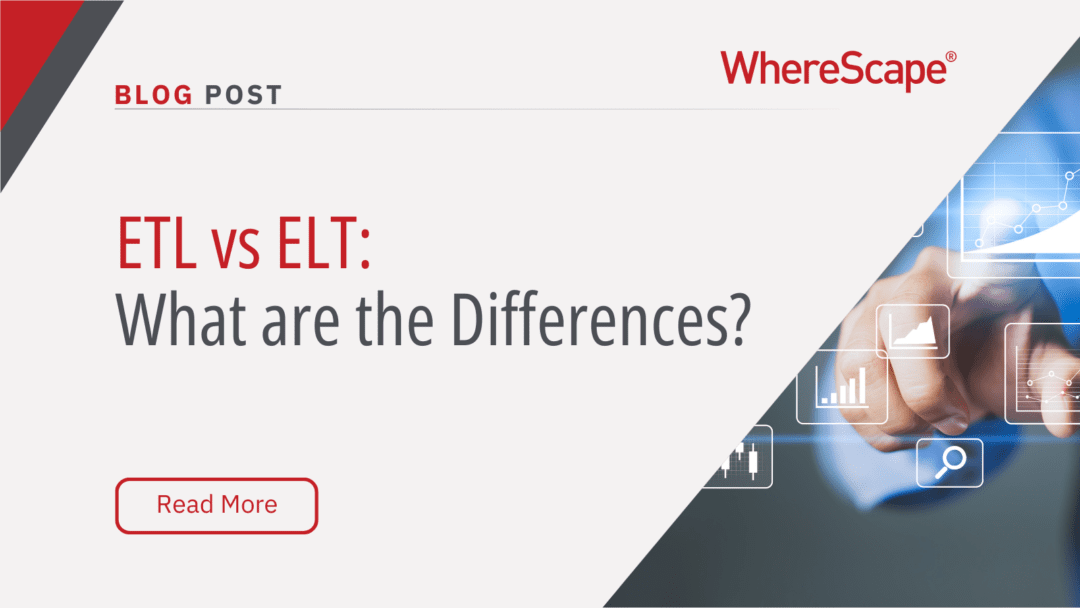
ETL vs ELT: What are the Differences?
In working with hundreds of data teams through WhereScape’s automation platform, we’ve seen this debate evolve as businesses modernize their infrastructure. Each method, ETL vs ELT, offers a unique pathway for transferring raw data into a warehouse, where it can be...
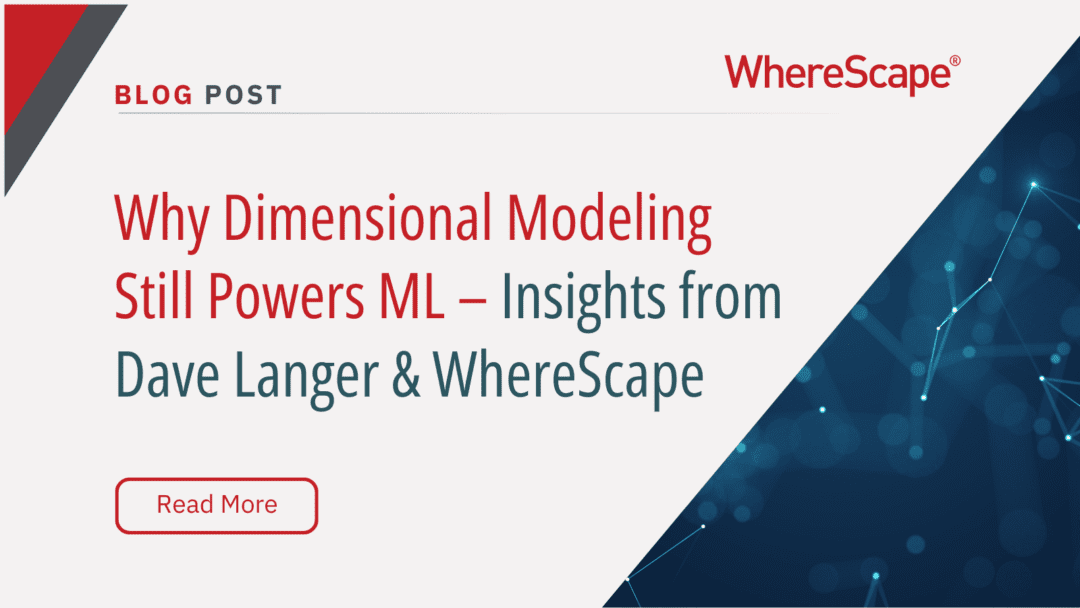
Dimensional Modeling for Machine Learning
Kimball’s dimensional modeling continues to play a critical role in machine learning and data science outcomes, as outlined in the Kimball Group’s 10 Essential Rules of Dimensional Modeling, a framework still widely applied in modern data workflows. In a recent...
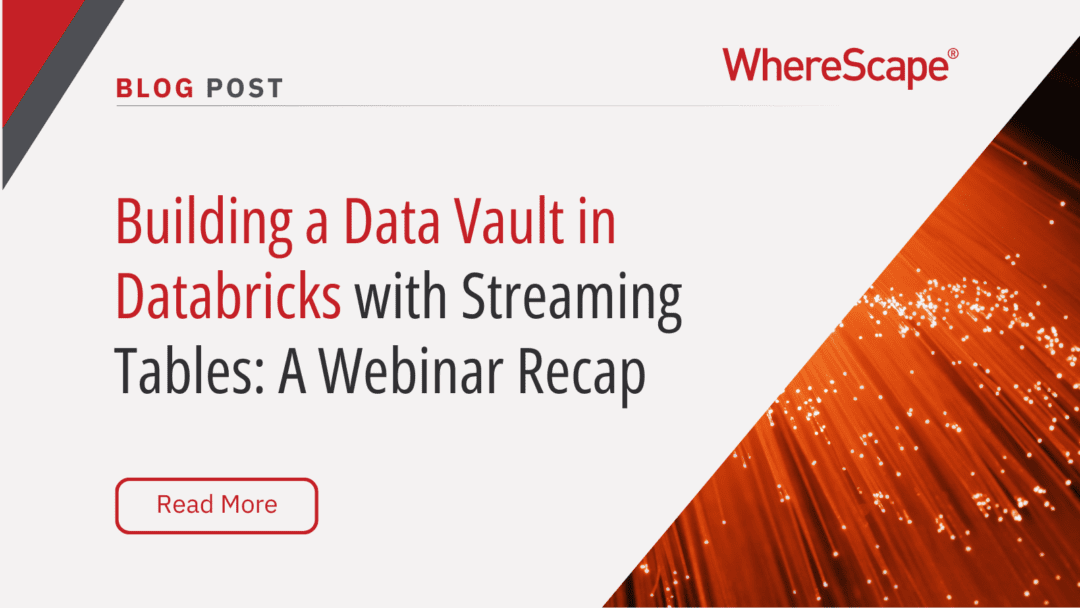
Automating Data Vault in Databricks | WhereScape Recap
Automating Data Vault in Databricks can reduce time-to-value by up to 70%—and that’s why we hosted a recent WhereScape webinar to show exactly how. At WhereScape, modern data teams shouldn't have to choose between agility and governance. That's why we hosted a live...

WhereScape Recap: Highlights From Big Data & AI World London 2025
Big Data & AI World London 2025 brought together thousands of data and AI professionals at ExCeL London—and WhereScape was right in the middle of the action. With automation taking center stage across the industry, it was no surprise that our booth and sessions...

